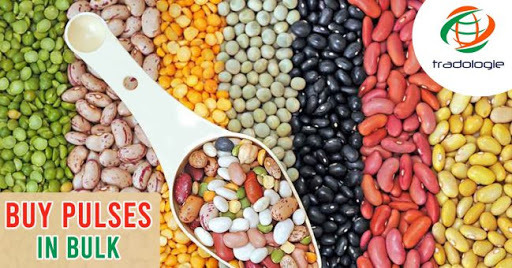#Chana Dal Supplier in Karnataka
Explore tagged Tumblr posts
Text

#Organic Chana Dal Exporter in India#Chana Dal Supplier in Karnataka#Chana Dal Wholesaler in India#Organic Chana Dal#Supplier#Exporter#Karnataka#India#Chana Dal Exporter#Chana Dal India
0 notes
Text
Pulses Wholesalers In India
No wonder Pulses hold an important place in Indian agriculture. In India, Pulses are grown over the area of 23.8 million hectares with total production of 18.6 million tonnes. 735KG/Hectare is the average yield of Pulses in India. Pulses are usually grown in irrigated as well as rain fed areas. The states from where the major portion of national pulses production come from are Madhya Pradesh, Uttar Pradesh, Gujarat, Maharashtra, Karnataka and Rajasthan. Madhya Pradesh is the highest pulses producing state in India. The projected requirement of Pulses production by the end of 2030 is estimated at about 32 milliontonnes. In India, Pulses play a major role enhancing the security of livelihood, security of nutrition, security of basic foods for regular life, soil health, profit of the farms and environmental sustainability. Pulses Wholesalers In India
PROCURE BULK AMOUNT OF PULSES ONLINE FROM TRADOLOGIE
With the cutting edge technologies and straightforward trading approach, Tradologie has built the most transparent communication bridge between the buyers and sellers. If you are looking forward to procuring bulk amount of pulses at the most reasonable price directly offered by the producers, Tradologie’s trading platform would be the best place for you. From International pulses like Red Kidney Beans, Chick Pease ( Desi and Kabuli both), Soyabeans to domestic pulses like Tur dal (Split Pigeon Peas), Chana Dal (Split Chickpeas), Masoor Dal (Lentils), Urad Dal (Gram Lentils), you just name it and we have number of sellers ready for you. We have a strong network of International Pulses suppliers from Ethiopia, Kenya, China, Poland, Ukraine, Argentina, Canada, Sudan, Mozambique, etc.
For More Information Contact Us Tradologie Pvt.Ltd
Contact Number - +91-8595957412, +91-120-4148741
Email Id - [email protected]
Website- https://www.tradologie.com/lp/pulse.html
Address - Green Boulevard, Plot No. B-9/A, 6th Floor, Tower B, Sector 62, Noida, Uttar Pradesh - 201309 (India).
0 notes
Text
South Indian Chitranna Rice
Chitranna Rice is a popular South Indian rice meal produced by tempering cooked rice with traditional spices like mustard, dals, and peanuts, then seasoning it with onions and coconut and lemon juice. In Karnataka chitranna rice, the crunch of peanuts, the flakiness of coconut, and the tang of lemon juice ensure an excellent balance of texture and flavour. You'll love how simple and convenient this recipe is.
We've gotten a lot of requests for Karnataka recipes, so we decided to make this classic Karnataka nimbehannu chitranna.
Chitranna Rice is a famous South Indian cuisine that is considered auspicious and served as an offering to God on festival days. People don't mind waiting in huge lines at temples to get their hands on Karnataka chitranna rice prasad.
Punit Proteins is one of the most reliable and excellent suppliers of Jeerasar Rice in Vadodara, Gujarat.
Chitranna Rice is a popular choice for packed South Indian lunches due to its ease of preparation and the fact that it is a one-dish vegetarian meal. The main difference is that while making it casually, you can add onions, whereas Karnataka chitranna rice prasad does not.
Preparation Time : 15 mins
Cooking Time : 6 mins
Total Time : 21 mins
Ingredients:
3 cups cooked non sticky basmati rice
2 tbsp oil
1/2 tsp mustard seeds
2 tsp urad dal
1 tbsp chana dal
3 tbsp raw peanuts
2 whole dry Kashmiri red chillies
4 to 5 curry leaves
1/4 cup chopped onions
1/4 tsp turmeric powder
1/4 tsp hing
1/4 cup grated coconut
1/2 tbsp lemon juice
salt to taste
1 tbsp chopped coriander
Method:
To make Chitranna Rice, heat the oil in a large nonstick skillet, then add the mustard seeds, urad dal, chana dal, and raw peanuts and cook for 2 minutes over medium heat.
If you wish to order the best quality Wada kolam rice in bulk quantity, Punit Proteins is the right place for you.
Sauté the onions and dried red chillies for 1 minute over medium heat.
Sauté for 1 minute on medium heat with turmeric powder, hing, and coconut.
Stir in the rice, lemon juice, and salt, and simmer for 2 minutes over medium heat, stirring periodically.
Finally, turn off the heat and stir in the coriander.
Chitranna Rice should be served hot.
0 notes
Text
Benefits of Pulse Consumption and their Types

Pulses occupy an important place in the Indian agricultural landscape. Diving deep into numbers, pulses are grown over an area of 23.8 million hectares with a total production of 18.6 million tons. The average yield of pulse in India stands at 735 kg/Hectares. The item is also an important source of protein and essential nutrients for the overall health of the population. Major pulse producing states in India are Madhya Pradesh, Uttar Pradesh, Gujarat, Karnataka, Maharashtra and Rajasthan. The country holds the unique distinction of being the largest producer, consumer and importer in the world. As a matter of fact, India contributes 20% to the total world production of pulses. Pulse exporters in India.
have been capitalizing on the international demand for Indian pulses. Pulses belong to the legume family and essentially include lentils and beans. Some of the commonly used pulses in India have been listed below:
TOOR: Toor dal is one of the most widely used lentils in India and in particular the state of Gujarat. It is commonly known as yellow pigeon peas or arhar. It is popularly used in preparing hot and steaming curries. The lentil is also a part of the daily diet in the household of southern India owing to its balanced taste between sweet, spicy and sour. The Toor dal has an abundant amount of healthy carbohydrates, protein, fiber, iron and calcium. All the nutrients together help in digestion and lowering the risk of heart diseases. The item also helps in managing the weight issue.
CHICKPEAS: It has many names like chana, garbanzo and Bengal gram. Based on the size, this is found in two different forms. The larger bean with white skin is known as Kabuli chana while the smaller bean with darker skin is known as desi chana. Chickpeas have benefits like it has an abundant source of vitamins and minerals. The calorie density is low in chickpeas and can effectively manage blood sugar levels.
MUNG BEANS: Moong beans popularly known as green beans are small in size. The beans are actually native to India and one of the most famous pulses exporters in India. The beans can also be sprouted and used as tasty snacks. They add delight to the consumption of salads. Mung is an important ingredient in India’s national food khichdi. Mung beans are extensively used for preparing yellow dal and curries. Mung beans are full of important nutrients like Vitamins, minerals, amino acids, protein. It also has a rich level of ant-oxidants present in it. Regular consumption helps in reducing cholesterol, aiding digestion and reducing blood pressure along with sugar level.

URAD: This is very similar to Mung. The earth flavor is ideal for the taste buds of sophisticated people. These varieties of pulses are primarily used for preparing daal makhani a creamy curry in India. URAD is full of healthy nutrients like Vitamin B, Protein, Fats, Carbohydrates, Iron, Calcium, magnesium and potassium. Regular consumption helps in reducing cholesterol, aiding digestion and reducing blood pressure along with sugar level.
MASOOR: This is a red lentil brown in color with an orange interior. It is used regularly in the northern part of India for preparing delicious soups and curries. This lentil contains healthy ingredients like fiber, protein Calcium, magnesium and potassium. Intermittent consumption can help in reducing cholesterol, aiding digestion and reducing blood pressure along with sugar level. This is also an anti-aging food, boosting the immune system and reducing cell damage.
Technology has enabled digital trade like never before. Containers full of commodities worth billions of dollars are being traded daily throughout the globe. However, many buyers and sellers are still unable to reap the benefits of emerging technology. This has been mainly due to the presence of middlemen and intermediaries. Buyers and sellers seldom connect directly. Middlemen are the interface pocketing bulk of the profit from the trade. Platform like India Mart and Trade India has not been able to sort out the issues of buyers and sellers credibility. Identifying the service gap, TRADOLOGIE has introduced India’s first intelligent platform for Industrial goods training Pulses Buyers/Sellers can connect directly with each other and expand the reach of market. TRADOLOGIE ensures payment security for both buyers and sellers. Buyers and importers can save up to 20% on bulk deals. TRADOLOGIE is a next-generation B2B trade-enabler platform hosting 200,000 verified buyers with 20,000 verified sellers. Both the buyers and sellers are 100 % verified. Buyers and sellers will have to furnish relevant documents like the letter of intent and LC (to complete the payment obligation. The seller receives the payment once the buyer receives the confirmation of dispatch as per the contract. Buyers can post an inquiry on the platform with the specifications. The reverse bidding mechanism enables sellers to quote the price to the buyer in real-time. Prices are genuine with real market insights. Buyers can see the entire spectrum of sellers and choose any one of them. Besides, there is also the option of a counteroffer to the sellers. If the supplier accepts the counteroffer, the deal is immediately concluded.
More Visit : Bulk Pulses Exporters in India
#Buy Bulk Pulses#Pulses Wholesalers#Buy Pulses in bulk#Pulses Exporters#pulse#Pulses Trader#tradologie.com#tradologie#bulk pulse exporter in india#bulk pulse exporter#pulse exporter india#pulse exporter in india#pulse buyers#pulse sellers
0 notes